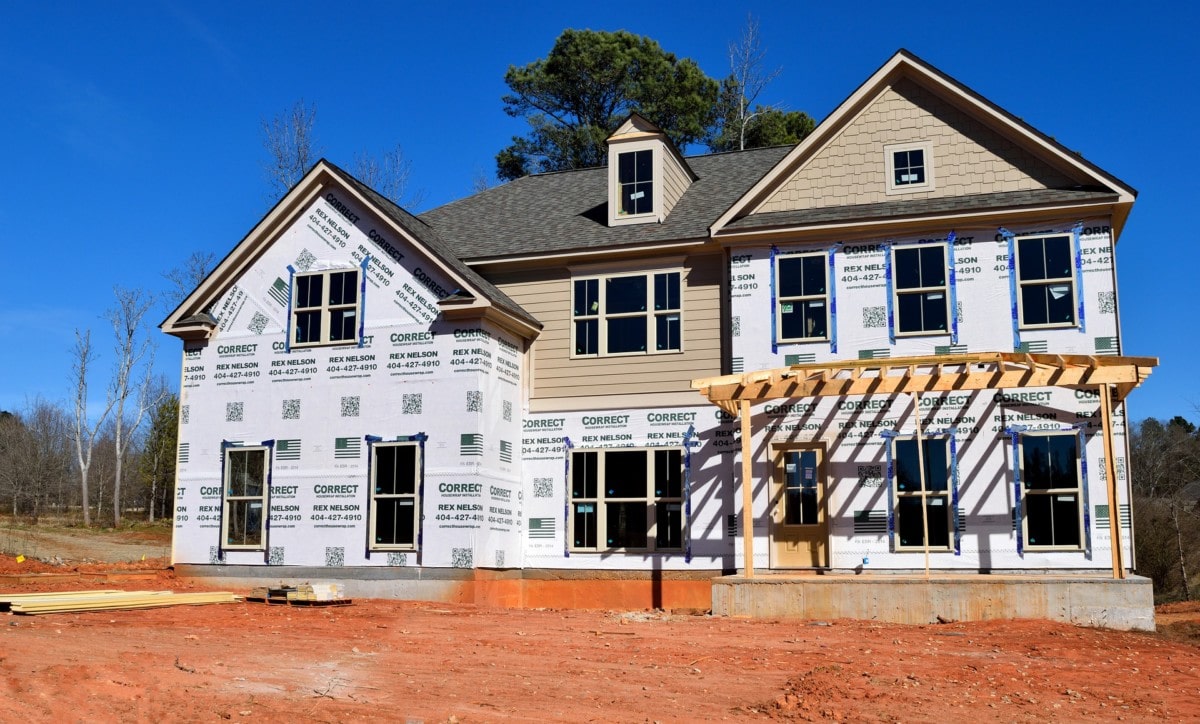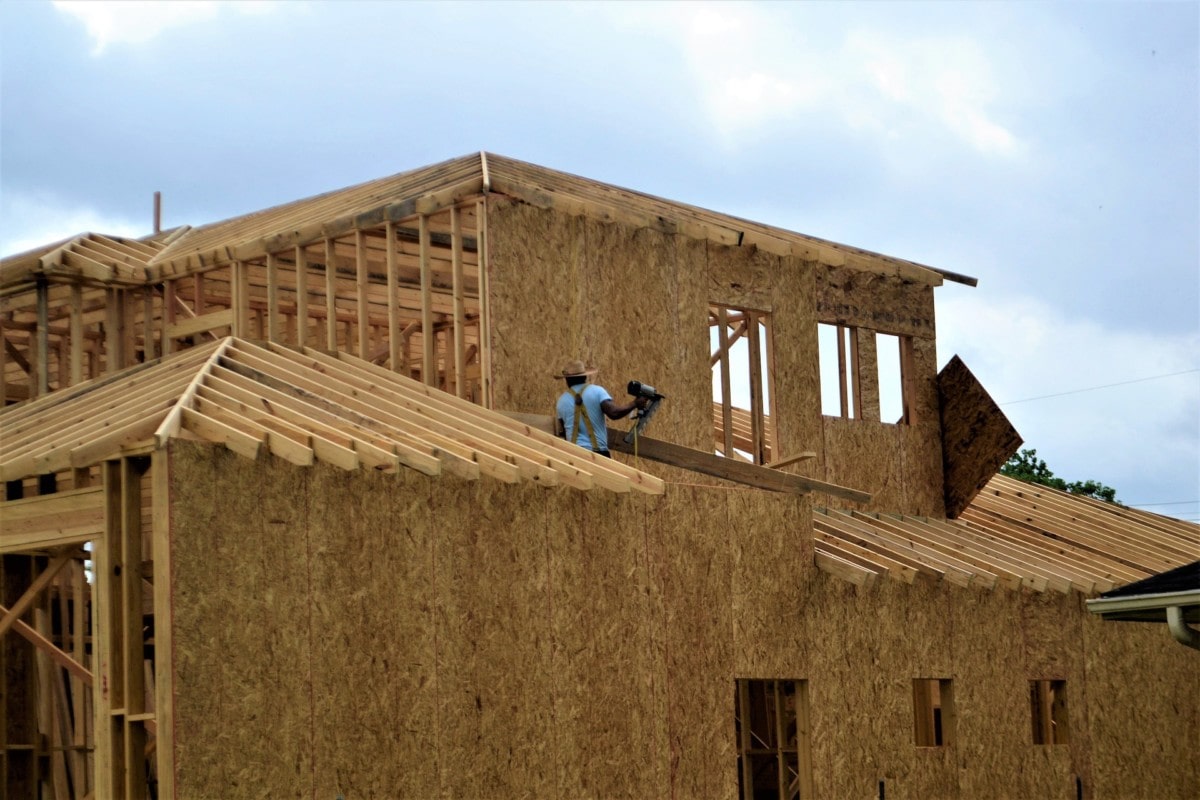Building a House? A Simple Guide to the Home Building Process
If you’ve been searching the real estate market for the perfect home and just haven’t found the one for you, building a house can be the best possible way to guarantee the house of your dreams. Building a house offers the ultimate flexibility, giving you the freedom to take your vision and bring it to life.
However, managing the construction process isn’t always easy. Building a house from the ground up takes a lot of coordination, financial resources, and professional assistance. Here is what you need to know about the home building process.

Secure Financing
Unless you have a lot of cash on hand, you’re likely going to need some sort of third-party financing to afford the cost of construction on a new home. Luckily, lending is available to homeowners for construction in a similar way to securing a mortgage for an existing home.
It’s important to note that construction-related loans may be slightly harder to secure than a traditional mortgage. FHA first-time homebuyer loans are limited as well for new construction, so those without a strong credit history are advised to do research to ensure adequate financing is available.
For homeowners who are confident in the construction process and are able to hold to a set timeline, construction-to-permanent loans can be an excellent option. This kind of loan allows property owners to pay contractors and other construction professionals as the work is done. That cost is then converted to a mortgage when construction is finished. Construction-to-permanent loans allow for a set interest rate at closing and consistent fixed payments.
Plan Your Home
Before moving forward with buying land and starting construction, you need to know what kind of home you want to build. A small plot of land may not accommodate your mansion dreams, while lots in subdivisions may have restrictions related to size and style. When planning your home, consider points like:
- Number of bedrooms
- Number of bathrooms
- Home layout, like a one-story home versus one with multiple floors
- Appearance preferences, like siding material and color
- Storage needs, including basement and attic spaces
- Open concept versus segmented rooms
- Outdoor space and landscaping
- Potential extras, like solar panels, sunlights, fireplaces, or anything else that may affect the construction process
Did you know that homes with hardwood floors consistently sell for over list price? Consider the most popular and valuable home trends across the country before building a house.
Be aware that compromise may be part of the process. It’s not unusual for plans to change as building gets underway for cost or logistical reasons.
Purchase a Lot to Build a House on
Once you have financing secured and know what kind of final product you want, you’ll need to choose a place to build your home. Since you’re building a house you can buy land anywhere, maybe you have your sights somewhere outside of Atlanta, GA or Dallas, TX? The options are endless. Parcels of land designated for new construction may be available in numerous locations, including underdeveloped suburban areas, rural areas, and as a part of subdivision development.
In some cases, where you buy can determine things like sewer, water, and electricity. In subdivisions, these details are usually completed when land parcels are listed for sale, but in less developed areas, this may be the responsibility of the property owner. Note that more rural land not protected by the subdivision development process or city law may require title insurance.

Handle Permits and Adhere to Regulations
Home construction is a highly regulated process. It’s not possible to just purchase property and start building. All construction projects need to adhere to local zoning laws and proceed under the proper permits.
Working with the right professionals can alleviate much of this burden. Contractors and construction companies will know what kind of permits are necessary to start the building process and ensure construction follows all regulations. The lead on your project can work with you to file papers and ensure you’re prepared to move forward in a safe, legal manner.
Hire Professionals
You may be handy with a hammer, but home construction really requires a professional team to guarantee a great final outcome. In order to bring your dreams to life, you will need to hire professionals for this process. This may include:
-
- Land grading company: They have extensive knowledge on issues such as how to properly work with various types of soil and plants, and can advise you on the best methods for removing obstacles, and what kinds of structures can be placed in certain areas.
- Architect: They see the big picture. Creating the complete look of your home, interiors and exteriors, that satisfy functional needs and are exciting spaces to live in.
- Custom home builders: A custom home builder will guide you through each phase of the home building process. They will work with you to coordinate costs and design your ideal home, inside and out. This will likely involve working with an architect, interior designer, and landscape specialists.
- Construction company: A construction company will handle everything from building the foundation to the final framing of the home.
- Electricians: They’ll make sure any fixed appliance that requires electricity, as well as any electrical outlets, will have the necessary electrical wiring installed. The electrician will run cables and wires to all switches, outlets, appliances and lighting fixtures throughout your home.
- Plumbers: A plumber will install all plumbing fixtures, septic tanks and sewer lines in the home.
- HVAC professionals: They will install all climate control systems in the home.
- Interior Designers: Hiring an interior designer early in the home building process can be helpful for everything from furniture placement to planning for special finishes to determining locations of electrical outlets and plumbing fittings.
The specifics of hiring will vary from one property to another. For example, land sold as part of a subdivision development may not require grading, but rural land purchased outside city limits might.
Hiring the Right Team
Land excavators, contractors, architects, and construction companies come in all shapes and sizes, and some are better than others. Instead of hiring the first names you come across online or in the phone book, be sure to do your due diligence on both reputation and abilities.
In some cases, like some government lending programs, including the USDA, approval of a particular builder or contractor is required to secure financing. Under these circumstances, it’s extremely important to pick competent, qualified professionals that can exceed expectations.
When evaluating professionals to work on your home, be sure to keep the following points in mind:
- Work experience; a competent team should have several years minimum of experience in single-family home construction, including homes in the size and style you have in mind.
- Adequate commercial liability insurance of $50,000 or more
- Proper contractor or construction licensing and any other permits required to operate legally
- Reference checks that include verification of quality service from previous clients
Many professionals provide free or affordable quotes and estimates as well. Seek pricing options from all your top candidates to best guide the decision-making process. Be aware that estimates can move and change as building progresses, so choosing a team at the very top of your budget could lead to potential problems should issues arise.

Oversee Building
Once you have secured financing, purchased land, arranged for all necessary permits according to local law, and hired the best possible professionals to help, the building process can get underway. This process can be quite fast using modern technology, but will still require numerous steps to complete.
- Land Preparation: Before breaking ground, construction teams will need to make sure the land is ideal for construction. This can mean clearing and grading the area, digging trenches, and confirming utility installation.
- Foundation and Footings: Once the land is ready, construction crews will build a foundation. Foundations may be slab, crawl space, or full basement, depending on region and land type, and will involve poured concrete with reinforced steel rods for security and stability.
- Framing: When the foundation is firmly in place, construction workers will build the frame, or the skeleton of the house. This can include subfloors, joists, trusses, and studs. If construction occurs during a high precipitation time of year, windows and roofing may also be installed during framing to prevent weather damage.
- Utility Installation: After completion of the core of a home, contractors can install electricity, water, plumbing, and HVAC systems. All of these installations should be approved by an inspector after completion.
- Insulation and Drywall: Insulation will be added to all exterior walls, floors, and ceilings and covered with drywall. Options include fiberglass, foam, and cellulose insulation. Drywall will also be hung on interior walls and primed with paint.
- Interior and Exterior Finishes: Once the basics are more or less complete, crews will install interior finishes, like molding, baseboards, doors, counters, cupboards, and other essentials. Contractors may also tackle things like driveways, walkways, and other landscaping requirements at this time.
- Flooring and Fixtures: The last interior step generally involves installing flooring and all other fixtures, like faucets, light switches, tubs, toilets, and heat register covers.
- Final Inspection: Once all features of a home have been built out, a final inspection is advised. Home inspections are a good idea for a new property as well as existing property, ensuring all elements of a home are in good working order and up to code. If builders made any mistakes in the process, an inspection can bring this to light so that repairs can be made before final project completion.
Building a house can be a stressful process, but there’s no better way to ensure your new house meets your every expectation. With a thorough understanding of the home building process, you can approach the construction of your dream home with care and confidence.
The post Building a House? A Simple Guide to the Home Building Process appeared first on Redfin | Real Estate Tips for Home Buying, Selling & More.
